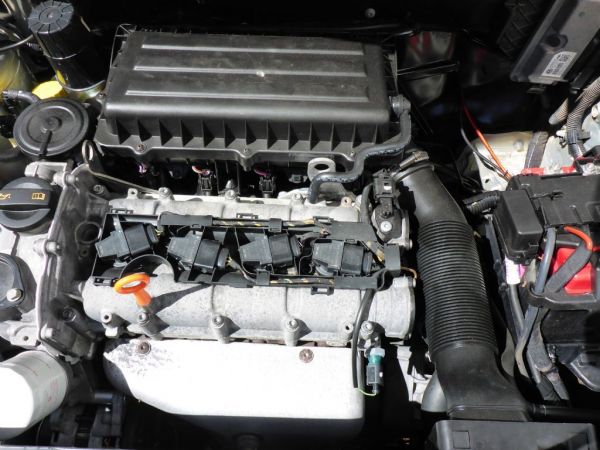Select a cost-effective clp engine for industrial applications.
Select a cost-effective clp engine for industrial applications.
Blog Article
Just How a Clp Engine Can Enhance Effectiveness in Various Industries
The advent of CLP engines marks a considerable change in operational efficiency across different fields, driven by their capability to enhance gas intake and minimize downtime. As organizations progressively focus on sustainability along with performance, the role of CLP engines ends up being also much more essential.
Review of CLP Engines
CLP engines, or Continual Fluid Propellant engines, stand for a considerable improvement in propulsion innovation, especially for area applications. These engines use a continuous feed system that enables the continual expulsion of propellant, resulting in enhanced efficiency and efficiency compared to conventional strong or hybrid propulsion systems. By keeping a continuous flow of fluid propellant, CLP engines can attain extra exact thrust control, which is essential for maneuvering spacecraft in numerous objective situations.
The design of CLP engines integrates innovative materials and ingenious fuel monitoring systems. clp engine. This results in decreased weight and raised reliability, essential variables for long-duration area goals. Moreover, the continuous operation decreases the danger of burning instability, a common obstacle in conventional rocket engines.

Advantages in Production
The production of Continual Fluid Propellant (CLP) engines provides a number of significant benefits that improve both effectiveness and cost-effectiveness. One of the primary benefits is the structured manufacturing procedure, which minimizes the intricacy linked with typical propulsion systems. By making use of fluid propellant, makers can accomplish higher accuracy in engine efficiency, resulting in enhanced power outcome and minimized waste.
Furthermore, CLP engines assist in a greater level of modularity, enabling less complicated assimilation into numerous production lines. This adaptability can significantly decrease preparations and enhance total operational adaptability. Making use of CLP technology additionally has a tendency to minimize the demand for substantial maintenance because of fewer moving components, which equates into minimized downtime and operational expenses.

Applications in Logistics
Leveraging Constant Liquid Propellant (CLP) engines in logistics provides considerable advantages in operational efficiency and reliability. These engines supply a durable solution for various transportation needs, enabling the smooth activity of items throughout huge ranges. The intrinsic style of CLP engines enables for constant power output, which equates into smoother and a lot more foreseeable transportation schedules.
Among the vital applications of CLP engines in logistics remains in durable freight transport, where they can drive both ground and airborne automobiles. Their capability to maintain high efficiency under differing tons conditions ensures that distribution timelines are satisfied, thus enhancing consumer contentment. image source In addition, CLP engines can be integrated right into automated logistics systems, promoting real-time monitoring and optimizing course preparation.
Moreover, the resilience of CLP engines lowers upkeep downtime, allowing logistics firms to maximize their functional abilities. This is particularly valuable in warehousing operations, where efficiency in managing and transferring goods is important. As logistics continues to advance, the combination of CLP engines represents a forward-thinking technique that not only boosts performance however also sustains the industry's growing needs for reliability and rate.
Effect On Power Efficiency
Exactly How do Continual Liquid Propellant (CLP) engines improve power effectiveness in transport? CLP engines utilize a constant circulation of liquid gas, maximizing combustion procedures and maintaining a steady drive output. This style minimizes energy losses related to traditional combustion engines, where gas distribution can vary and result in inadequacies.
The continuous operation of CLP engines permits an extra efficient thermal cycle, leading to higher particular impulse compared to standard engines. clp engine. This converts to reduced fuel consumption for the exact same quantity of job done, dramatically lowering operational costs across different transportation markets, consisting of aeronautics and maritime sectors
Moreover, the ability of CLP engines to maintain optimal performance under varying tons problems minimizes the demand for constant velocity and deceleration, even more enhancing fuel efficiency. Improved energy efficiency not just adds to set you back financial savings however likewise causes reduce greenhouse gas discharges, lining up with global sustainability goals.
Future Trends and Innovations
Arising innovations in Continual Fluid Propellant (CLP) engine innovation guarantee to transform the landscape of transportation performance and sustainability. As sectors pivot towards greener options, CLP engines stand at the forefront, incorporating cutting-edge materials and design methodologies that boost efficiency while reducing environmental influence.
Among the most promising fads is the fostering of hybrid systems that incorporate CLP engines with eco-friendly energy sources. This harmony can enhance fuel intake and decrease emissions, straightening with worldwide sustainability goals. Developments in computational fluid dynamics (CFD) are helping with the layout of more aerodynamically effective engines, leading to reduced drag and improved fuel efficiency.
In addition, the advancement of clever tracking systems is set to boost functional effectiveness. These systems leverage information analytics and IoT modern technology to enhance engine efficiency in real-time, guaranteeing that the engines run within their most efficient parameters.
As study remains to explore different propellant formulas-- such as biofuels and synthetic fuels-- the future of CLP engines looks promising. By utilizing these developments, markets can not only boost their efficiency yet also contribute considerably to a have a peek at these guys cleaner, much more sustainable future in transport.
Verdict
Finally, CLP engines stand for a substantial improvement in effectiveness throughout several industries. Their capacity to enhance fuel usage and decrease functional costs, incorporated with a continuous feed system, improves power output and functional wikipedia reference integrity. The combination of advanced materials and less relocating parts reduces maintenance needs, while placement with sustainability goals settings CLP engines as an essential technology for the future. Continued innovation in this field assures more improvements in efficiency and environmental performance.
Report this page